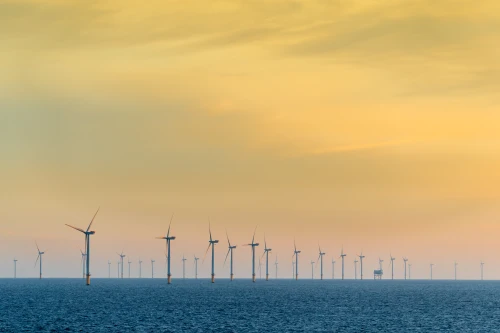Understanding carbon trading and its role in sustainability
Carbon trading represents a collection of ways to reduce carbon emissions. But what is carbon trading, and how does it work? Market-based instruments regulate carbon emissions, causing carbon markets to develop. This is done by applying pricing to carbon emissions and trading on carbon markets. For example, one unit of ‘offset’ carbon emissions can mitigate the target emissions that are produced.
Two significant types of carbon markets are compliance and voluntary markets. Compliance markets relate to mandatory carbon emission reduction targets that companies have to meet as part of their legal compliance responsibilities. Over-producers of carbon emissions will usually buy carbon allowances from under-producers of carbon emissions. Companies trading in compliance markets may receive penalties if they don’t meet these targets.
Voluntary markets, however, are not mandatory. Companies that opt to become involved in voluntary markets usually do so to improve the sustainability of their businesses and hit internal targets, potentially to improve brand reception or EVP (employee value proposition). They may also enter voluntary markets as offsetters to reap the financial benefits of offloading to other businesses. No regulatory penalties apply to targets set in voluntary markets.
Economic and environmental benefits of carbon trading for green projects
As mentioned above, failing to meet regulatory targets usually results in penalties or fines for businesses that do not achieve them. These fines are often imposed by the government body regulating that policy. Incentives are sometimes given as part of schemes that encourage businesses to eradicate the initial emissions or invest in renewable energy rather than remove carbon dioxide already generated by these businesses.
Another key benefit of the carbon trading market is encouraging businesses to invest in sustainability. Sustainable projects needing financing can be contacted by businesses looking to become involved in the carbon trading market and purchase offset carbon from these schemes. Incentives are sometimes given as part of schemes that encourage businesses to directly eradicate the initial emissions or invest in renewable energy rather than removing carbon dioxide already generated by these businesses.
How can carbon trading fund green initiatives?
The carbon trading market is a huge bolster for the sustainable industry, as it redistributes funding from heavily polluting companies and applies them to green energy and sustainability-led projects.
How do wind and solar projects benefit from carbon markets?
Carbon trading allows renewable providers and connected organisations the opportunity to sell their excess carbon emissions allowances to other businesses that are overproducing, a process known as cap and trade. This method of ‘selling’ excess allowances allows over-polluters to invest back in renewable projects, such as solar and wind, investing back in the renewable energy industry as a whole while meeting their own carbon emission targets.
Forest conservation and reforestation through carbon offsets
Carbon partner schemes link sustainable projects with businesses wanting to purchase offset carbon. These schemes often focus on projects such as reforestation and forest conservation. Businesses can choose which projects they invest in and where the money they pledge goes, whether through a local wetlands scheme or an international rainforest initiative.
Industrial decarbonisation supported by carbon trading
Compliance markets - or mandatory targets that must be met - often include heavy carbon emitters such as heavy industry and aviation. This is partly because these industries find it difficult to reduce carbon emissions and risk a fine if they emit more than their allowance. Therefore, for industrial decarbonisation to happen, trading via carbon offsetting is necessary to meet this industry’s carbon reduction targets.
Challenges and future trends in carbon trading for green projects
The future of carbon pricing and global emissions reduction targets seems positive. We’ve already seen huge growth in carbon trading, with offset carbon price increases. As more companies strive to meet impending targets and avoid fines, the price of trading will likely increase. Some businesses are stockpiling offset carbon units in the hope that their price will increase on the market in the future as demand rises, creating a micro-trading environment with the carbon trading market.
The integration of technologies such as AI will propel the trading market forward. For example, drones can be used to map reforestation projects more accurately so that the amount of carbon offset can be more accurately estimated and potentially predicted.
How can businesses participate in carbon markets?
Businesses looking to enter carbon markets should turn to China for inspiration: Shanghai Environment and Energy Exchange, based in China, is one of the few aspirational carbon markets in existence and is currently the most widely used and biggest.
It should be noted that both government-mandated and internal policy builders are consistently moving the goalposts, and this impacts carbon pricing. Policy recommendations for strengthening carbon trading systems might include more stringent checks to ensure double counting of carbon units doesn’t take place, potentially affecting the reliability and value of carbon offsetting in carbon trading. Policies that prioritise the clear accreditation of carbon reduction mechanisms are also key to retaining these mechanisms' value in the carbon trading market. The role of Blockchain and technology in carbon credit tracking is also crucial, as it introduces an entirely automated, digital transactional process for the carbon trading market. The introduction of Blockchain highlights the importance of developing transparent transactional and financial structures.
Carbon trading is a powerful tool for driving sustainability, offering both environmental and economic benefits while helping businesses transition to a greener future.


